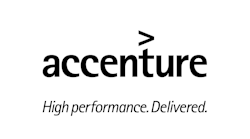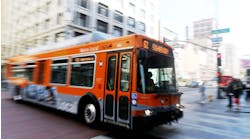The emergence of the digital transit traveler gained a lot of traction in 2014. For the first time in transit technology’s history, we saw contactless cards, smartcards and the rise of mobile fare through near field communication (NFC). Public transit agencies began to upgrade their back end systems to support new digital technology and bring them to the cloud. While traveler demand drove these technology upgrades, the popularity of alternative transportation options are bringing a greater diversity of vendor products and services that are challenging the traditional vertical integrated proprietary approaches.
Public transit agencies that wish to remain relevant and popular among travelers in the local transportation market need to aggressively move forward less like an operator for transit and more like a service provider for travelers. This new standard is being called for from both the traveler and the federal government. Private transportation companies already have an advantage here as they have equipment and staffing capabilities to serve selected traveler markets at a lower cost than public provides. Plus they may be able to assemble resources and deliver service more quickly than public right now due to their advanced integrated technology assets.
To provide a superior travel experience, transit agencies will need to establish a systems integration approach that brings together open digital payment platforms in order to provide transit agencies the flexibility to integrate the digital customer experience and enable multiple journey payment options. This will allow transit agencies to support traveler retention strategies, similar to what is practiced in the travel private sector already. To stay ahead of the market in 2015, we predict that the emerging transit trends will expand the capabilities of fare management payment solutions through the development of loyalty programs and the integration of the digital retailer coupon.
Travel loyalty programs are very well established across various private travel companies and in all parts of the world. The airline industry is a great example that public transit agencies should review as they begin to establish their own travel loyalty program. Airlines have taken great strides to make the travel experience pleasurable. They have appealed to cost sensitivities by offering diverse price points at different times throughout the day as well as opening up mileage plus programs that reward travelers for using their service with free perks, flights and seat upgrades. This not only opens up the traveler market to serve a variety of price points, but also offers an opportunity for airlines to spread out the volume of travelers across many different travel times thus supporting a more manageable flow. These types of loyalty programs can be easily adopted by public transit companies and managed from the fare management payment system without adding operating costs or sacrificing fare box recovery if their infrastructures are designed with such goals in mind.
We saw transit agencies begin to make incremental movements towards enhancing traveler r loyalty last month. The Chicago Transit Authority, LA Metro, San Francisco Municipal Transportation Agency, Vancouver, TriMet and many others offered free rides on New Year’s Eve. Additionally, Miller Lite teamed with Milwaukee County Transit System and Waukesha Metro Transit to support free rides on New Year’s Eve.
In an age where discounts on goods and services continue to rise and influence decision making, transit agencies can capitalize on the integration of the digital retailer trend better than other industries. Many of the public transport decisions made in urban environments tend to be done quickly – it’s either the mode one takes every day or it’s based on one’s departure and arrival time needs. To influence a traveler’s choice even deeper, a digital retailer coupon may incentivize the traveler to continue to choose public transit over private options. For example, DART implemented a mobile ticketing platform integrating third party offers such as access to the State Fare to provide a convenient way for customers to bundle transit purchases with the purchase of State Fare tickets. Once again, this can be easily integrated in and managed by the fare management payment system. Rewarding public transit travelers with loyalty programs and incentives can attract a new segment of potential revenue and the mindset of transit can shift to discounting fares and promoting bonuses.
In order for public transit agencies to be successful at their loyalty programs and to incentivize the digital retailer to participate, they will need to show the advantage they have over private transportation companies through the use of customer data. Public transport’s vault of traveler data that’s been stored for years in the local industry and in every urban environment will surpass most every type of traveler data available in the market today. However, public transit agencies will have to establish a way to access the data, analyze it and leverage it across multiple departments.
Traveler Data Pull
It’s time for public transit agencies to flex their muscle to improve how they access, analyze and leverage traveler data insights to keep them as the top transit choice by travelers. The American Transportation Association reported that almost 10 million travelers chose transit from January – September 2014. In addition, there will be immense opportunity for pulling additional data from activity on transit apps where the preference and behavior information about a specific traveler would not otherwise be available.
Traveler Analytics
To best address the need for accessing traveler data, public transit agencies would benefit from establishing a centralized analytics team. This team’s scope of work will span across marketing activities as well as traveler and prospective audiences. This will allow agencies to capture the richest understanding of the traveler and measure their retention campaigns effectively.
Go Head-To-Head with Private Transit
Having a deep understanding of traveler analytics will empower agencies to leverage its services in a more attractive way, such as providing more multi-modal and regional opportunities and better managing commuter traffic. Additionally, transit agencies can share this data with the digital retailer to help them prepare and better target the real-time commuter foot traffic opportunities. The combination of these two applications will certainly make public transit more appealing to travelers.
In 2015, while we will continue to see the digital revolution upgrade public transport’s technology, we predict that the emerging trends will be to establish loyalty programs and integrate the digital retailer. At the end of 2015, transit authorities will make progress in their quest to be viewed less like an operator for transit and more like a service provider.
Michael Wilson is managing director of public transport for North America at Accenture


